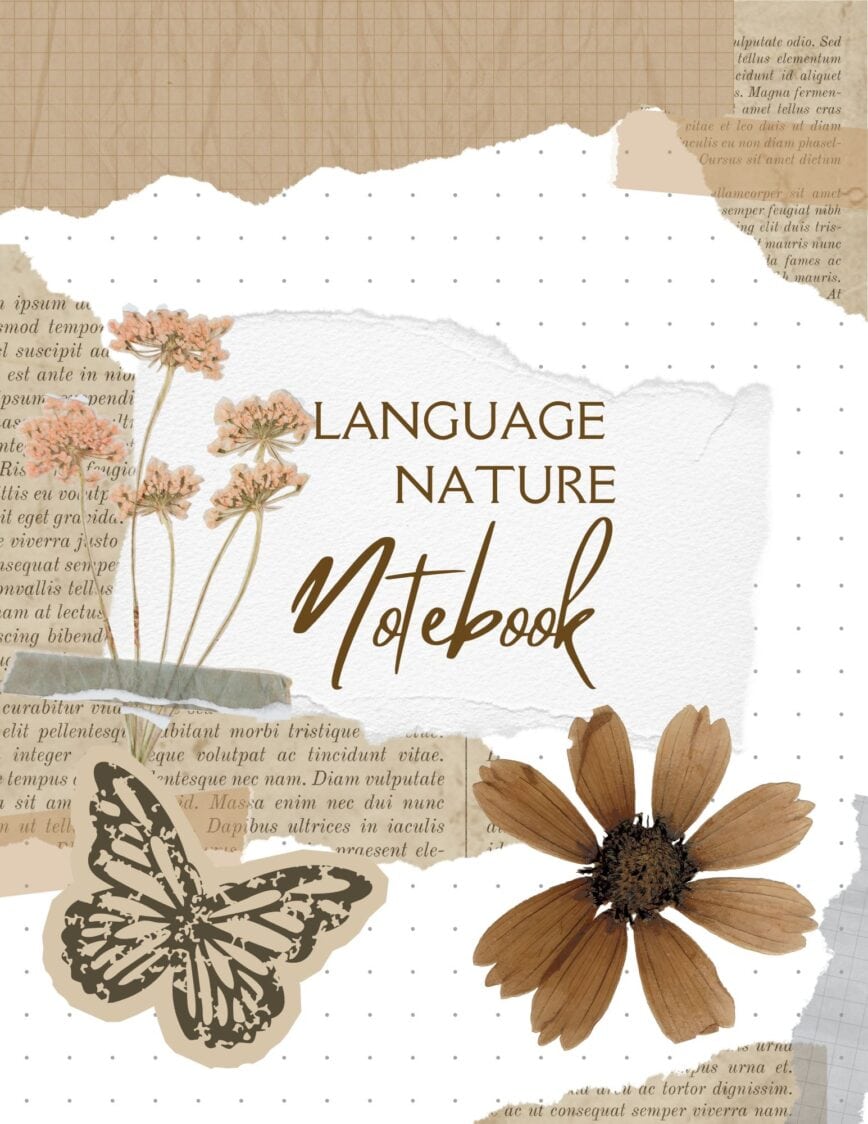
Did you ever consider a language nature notebook for your 4-11 year old child? If not let´s look at how this can make language learning exciting, which it needs to be otherwise things can go down-hill pretty quickly.
As always this blog post is inspired by the educational philosophy of Charlotte Mason. Language nature notebooks can be a fantastic tool to encourage language development in children of a younger age range.
So let´s start!
Introduction to Language Nature Notebooks
Nature notebooks are personalised journals where children can record their observations, sketches, thoughts, and reflections about their outdoor experiences.
These notebooks not only help children to obtain a deep connection with nature but also serve as a fabulous tool for language learning. By documenting their encounters with nature, children can enhance their vocabulary, practice writing, and develop narrative skills.
Activities for Ages 4-7
Picture and Label
- Activity: Take your child on a nature walk and encourage them to collect items such as leaves, flowers, or small stones. Once back home, help them glue or tape these items into their nature notebook. Ask them to draw a picture of each item and assist them in labelling it both languages.
- Language Focus: Vocabulary building and recognition of simple words.
My Favourite Animal
- Activity: During a park visit or a zoo trip, let your child choose their favourite animal. Take a few photos to print out back at home or, they can draw the animal in their notebook and describe it with a few simple sentences. For example, “This is a lion. It is big cat and has a mane.”
- Language Focus: Sentence formation, descriptive language, and basic vocabulary.
Now I know I can hear you saying that Charlotte Mason said that when learning a language we should learn it as a native language through listening and speaking rather than reading and writing at this very early stage, however this is all about getting very basic words and sentences down that children of a young age can recall and not long sentences and short essays!!!
Colour Hunt
- Activity: Create a colour chart in the language nature notebook with different colours using either colouring pencils or paints. During an outdoor adventure, ask your child to find and either draw objects that match each colour or stick them into the notebooks. They can write the names of the objects next to their drawings in both languages with your help.
- Language Focus: Colour vocabulary and object identification.
Bridging the Age Gap
For families with children between 4-11 and also older children consider collaborative activities. Older siblings can guide younger ones in drawing and labelling, or they can work together on descriptive journaling by sharing observations and crafting stories.
There is no reasons why the children of varying ages cannot do the same activities the tasks just need to be adjusted to ensure a different level of learning. Such as adding more complexer sentences and vocabulary, and also maybe a complete journal entry or short story. Be flexible and also choose topics that the children are interested in, this also helps a lot with concentration and enjoyment.
Conclusion
Language Nature notebooks are more than just journals; they encourage imagination into another world of learning and creativity.
By combining nature observation with language activities, children can enhance their vocabulary, writing, and expressive skills while developing a lifelong appreciation for the nature. Embrace the outdoors with your children, and watch as their language abilities blossom through the pages of their language nature notebooks.
For some more ideas for language learning notebooks take a look here


